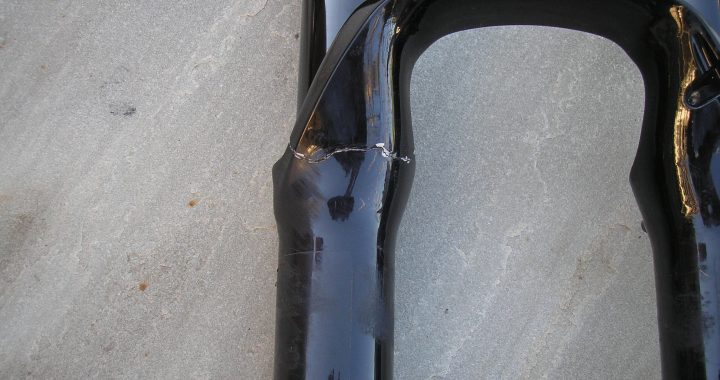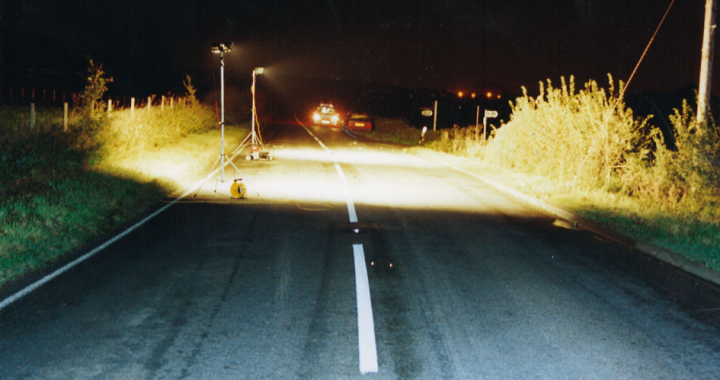Reported by Road cc is the appallingly sad case of Dr Daniel Gordon whose Planet X Tempest SRAM Force 1 collapsed under him on 10th August 2020 causing life changing injuries. Dr Gordon and his partner are obviously made of stern stuff because they have got on with their lives around the injuries sustained.
Why has such an apparently straightforward case come to court? It could be that Insurers have made a without prejudice financial offer which is deemed insufficient by Dr Gordon’s lawyers, so Insurers are having a go at liability and causation to try to reduce their exposure through a finding of some contribution.
Or it could be that Insurers are not wanting to acknowledge the responsibilities which the legislation places upon them. In my experience in running scores of component failure cases, that is not uncommon. The arguments often verge on the bizarre. In another steerer failure case, Condor’s insurers argued that the presence of a small bag on the cycle’s handlebars pre-disposed the fork to failure. When the dropout of a Cervelo’s fork literally dropped out, insurers argued many alternative theories explaining the failure including that the claimant’s habit of inverting his bike for maintenance might have in some way been responsible.
The abundance of consumer legislation tends to suggest that if a part purchased from a retailer, whether a High Street Independent Bike Dealer (IBD) or a national chain fails, then losses sustained will be compensated promptly and properly.
If only !
The Consumer Rights Act gives a right of redress against the point of sale but does not prevent that retailer (meaning their insurer) claiming indemnity from their supplier, the importer and the manufacturer or importer into the EU.
Which leads to a process which can go on for years.
So to avoid this the knack is to identify the ultimate source (who’s going to write out the cheque?) and go for them under the Consumer Protection Act. But as there’s a 3 year limitation period if someone is not included, the right to claim vanishes against that party after 3 years.
The only problem is that while the CPA provides for compensation for injury and consequential losses, it does not cover the cost of the actual defective item, so the retailer may also be joined in under the CRA. But at least that’s only 2 defendants as opposed to 3 or 4.
Under no circumstances part with the failed componentry. Keep it in the post-crash condition without further disassembly. A screening report from a scientist and/or engineer will identify why the failure has occurred, although as a matter of law a Claimant is NOT required to prove the precise design or manufacturing failure, flaw or mechanism which was the root of the failure. The obligation extends no further than establishing that the product was defective. This is defined thus:
CPA S3 (1) Subject to the following provisions of this section, there is a defect in a product for the purposes of this Part if the safety of the product is not such as persons generally are entitled to expect; and for those purposes “safety”, in relation to a product, shall include safety with respect to products comprised in that product and safety in the context of risks of damage to property, as well as in the context of risks of death or personal injury.
(2) In determining for the purposes of subsection (1) above what persons generally are entitled to expect in relation to a product all the circumstances shall be taken into account, including—
(a) the manner in which, and purposes for which, the product has been marketed, its get-up, the use of any mark in relation to the product and any instructions for, or warnings with respect to, doing or refraining from doing anything with or in relation to the product;
(b) what might reasonably be expected to be done with or in relation to the product; and
(c) the time when the product was supplied by its producer to another;
and nothing in this section shall require a defect to be inferred from the fact alone that the safety of a product which is supplied after that time is greater than the safety of the product in question.
The defences advanced to a Consumer Protection Act claim will include:
- There had been an intervening event which was more likely to be causative of the failure than a flaw in the design/production process,
- The Claimant has neglected servicing and maintaining the machine in accordance with the User/owners’ manual
- The machine has been used inappropriately.
- Although the primary Limitation Period is 3 years from the date of the accrual of the cause of action (the failure), there is a 10 year longstop commencing when the product was “put into circulation”, which means that a bike purchased in say 2006 and which failed in 2018 would be out of time for a CPA Claim. (the solution would be to sue the retailer under the SOGA within 3 years of the failure: before 2021)
A prudent cyclist who has purchased a bike costing a serious amount for a specific purpose will keep a file on its history, recording mileage, inspections, services and maintenance whether undertaken personally or commercially and any mishaps (collisions/crashes). Receipts ought to be kept. It’s a sensible idea (if possible in the era of internet shopping -always a good idea to support your local IBD) to have at least the first service undertaken by the supplier.
Don’t expect a swift resolution to a claim. The Cervelo crash mentioned saw legal representatives from Cervelo, the fork manufacturer THM and the financier who provided the credit facility all pitching up. All very cumbersome and expensive and a reason why it’s essential to ensure your legal representative Knows What They are Doing!


